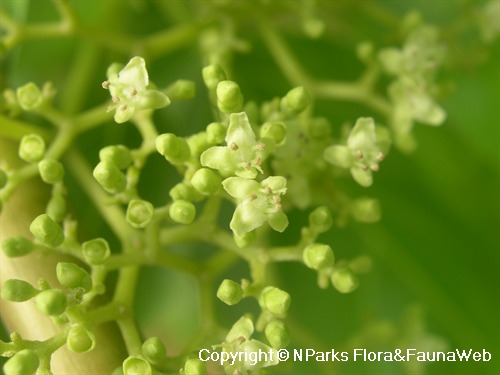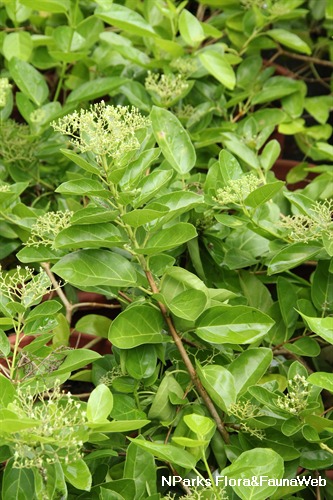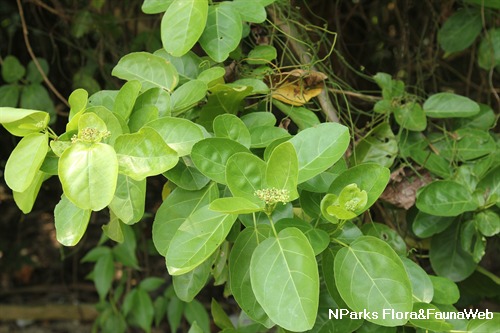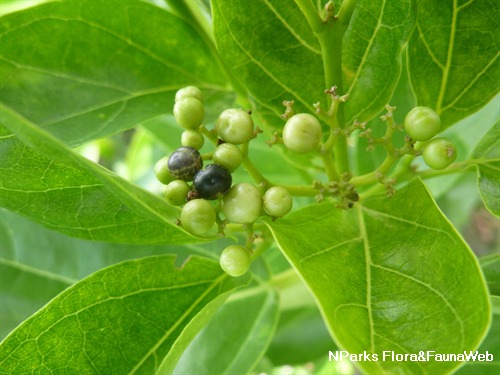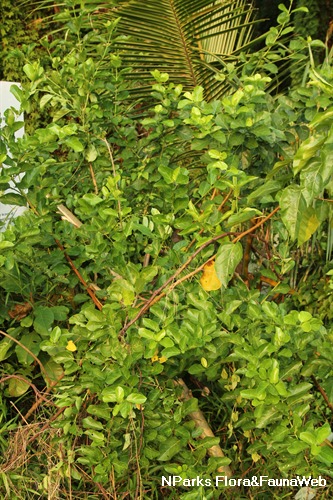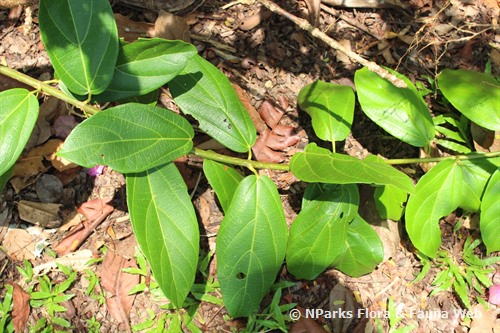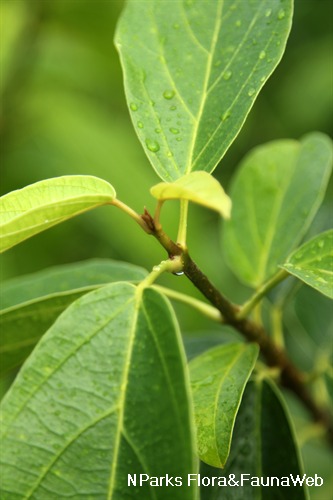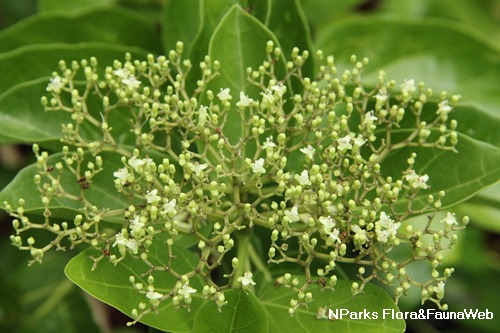
Back
Premna serratifolia L.
| Family Name: | Lamiaceae (Labiatae) |
| Synonyms: | Premna foetida Reinw. ex Blume, Premna obtusifolia (L.) Moldenke var. serratifolia, Premna borneensis H.J.Lam, Premna kunstleri King & Gamble |
| Common Name: | Buas-Buas, Bastard Guelder, Bangkung Kayu, Sarunai, Singkel, 伞序臭黄荆 |
Name
Classifications and Characteristics
| Plant Division | Angiosperms (Flowering Seed Plants) (Dicotyledon) |
|---|---|
| Plant Growth Form | Tree (Small (6m-15m)), Shrub |
| Lifespan (in Singapore) | Perennial |
| Mode of Nutrition | Autotrophic |
| Maximum Height | 9 m |
Biogeography
| Native Distribution | Tropical Asia (including Singapore) to the southwest Pacific |
|---|---|
| Native Habitat | Terrestrial (Coastal Forest), Shoreline (Mangrove Forest, Sandy Beach) |
| Preferred Climate Zone | Tropical |
| Local Conservation Status | Native to Singapore (Least Concern (LC)) |
Description and Ethnobotany
| Growth Form | It is a straggling shrub or small tree up to 9 m tall. |
|---|---|
| Foliage | Its simple, stalked leaves have leaf blades that are elliptic, glossy dark green above, light green below, and 6.4–15.3 by 3.8–10 cm. A foul smell is produced when the leaf blades are crushed. |
| Flowers | Its greenish-white or white fl owers are 2.5 mm wide, and arranged in clusters that are 5–13 cm wide. |
| Fruit | Its 5 mm-wide, round fruits are 1-seeded berries that ripen from light green to shiny black. |
| Habitat | It grows along rocky and sandy coasts, in open country, near mangroves and other coastal sites. |
| Associated Fauna | Its flowers are pollinated by butterflies and other insects. The fruits are eaten and dispersed by birds. It attracts Emerald Sweat Bees. |
| Cultivation | It can be propagated by seed or stem cutting. |
Landscaping Features
| Landscaping | It is suitable for streetscapes, parks and gardens. |
|---|---|
| Desirable Plant Features | Ornamental Foliage, Ornamental Flowers |
| Landscape Uses | General, Flowerbed / Border, Hedge / Screening, Suitable for Roadsides, Parks & Gardens, Coastal, Beachfront / Shoreline |
| Thematic Landscaping | Bird & Wildlife Garden |
Fauna, Pollination and Dispersal
| Fauna Pollination Dispersal Associated Fauna | Bird-Attracting (Fruits), Butterfly-Attracting, Bee-Attracting |
|---|---|
| Pollination Method(s) | Biotic (Fauna) (Insects (Bee)) |
| Seed or Spore Dispersal | Biotic (Fauna) |
Plant Care and Propagation
| Light Preference | Full Sun, Semi-Shade |
|---|---|
| Water Preference | Moderate Water |
| Plant Growth Rate | Moderate |
| Rootzone Tolerance | Well-Drained Soils, Waterlogged Soils (Drains Site), Moist Soils, Saline Soils / Salt Spray, Fertile Loamy Soils |
| Propagation Method | Seed, Stem Cutting |
Foliar
| Foliage Retention | Evergreen |
|---|---|
| Mature Foliage Colour(s) | Green |
| Mature Foliage Texture(s) | Glossy / Shiny, Leathery |
| Foliar Type | Simple / Unifoliate |
| Foliar Arrangement Along Stem | Opposite |
| Foliar Attachment to Stem | Petiolate |
| Foliar Shape(s) | Non-Palm Foliage (Elliptical) |
| Foliar Venation | Pinnate / Net |
Floral (Angiosperm)
| Flower & Plant Sexuality | Bisexual Flowers |
| Flower Colour(s) | Green, White, Cream / Off-White |
|---|---|
| Flower Grouping | Cluster / Inflorescence |
| Flower Location | Axillary, Terminal |
| Flower Symmetry | Radial |
| Inflorescence Type | Corymb |
Fruit, Seed and Spore
| Mature Fruit Colour(s) | Black |
|---|---|
| Fruit Classification | Simple Fruit |
| Fruit Type | Fleshy Fruit , Berry |
Image Repository
Others
| Master ID | 30300 |
|---|---|
| Species ID | 4609 |
| Flora Disclaimer | The information in this website has been compiled from reliable sources, such as reference works on medicinal plants. It is not a substitute for medical advice or treatment and NParks does not purport to provide any medical advice. Readers should always consult his/her physician before using or consuming a plant for medicinal purposes. |

